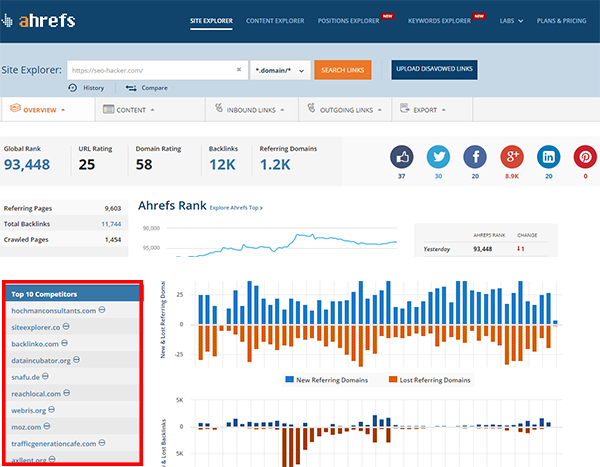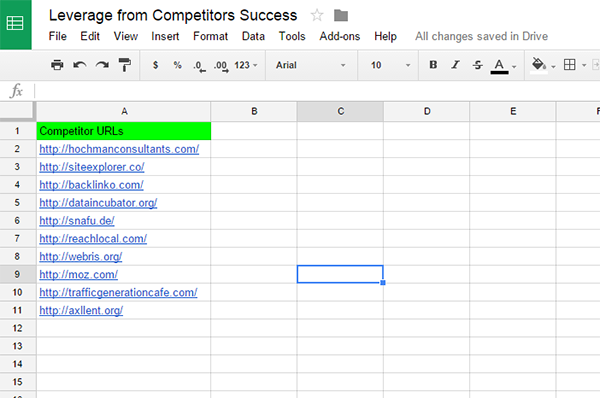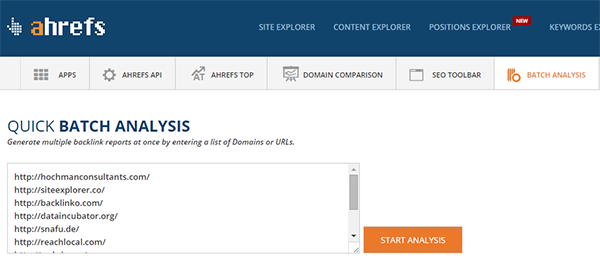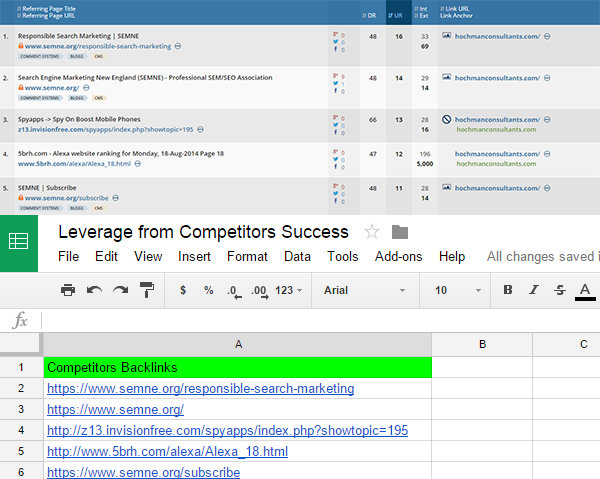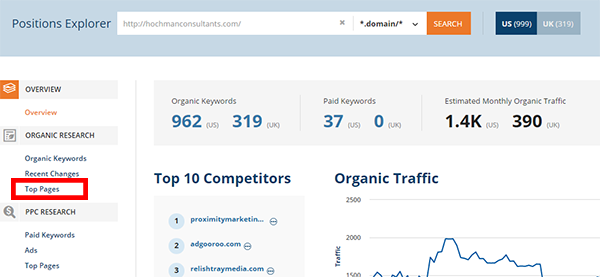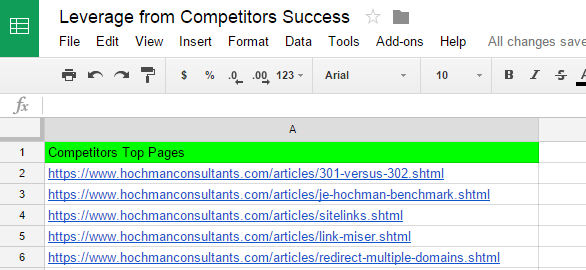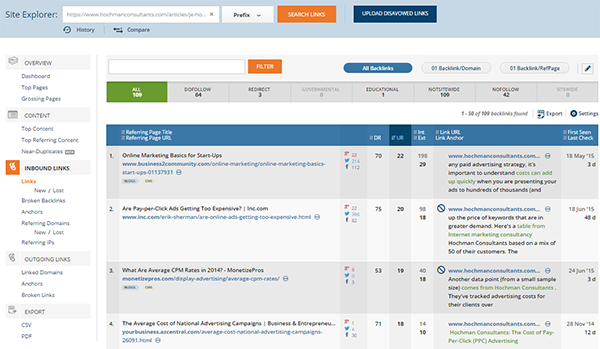How to Leverage from your Competitor’s Success
Ever wish you can beat your (most amazing) competitors but you feel like you don’t have all the resources and power to do so? That’s okay, for there are so many ways to do it, and so many tools that you can use to help you.
In this article, I will show you easy ways to learn from your competitor’s success (in terms of backlinks and traffic) so you can acquire the same thing – which you can achieve through relationship building, by creating quality content, and by targeting the right keywords.
I’m going to divide this tutorial into two parts. One for the backlinks, and the other one for getting content ideas from your competitors. Note that the first two steps are applicable for both parts.
How to Leverage from your Competitor’s Success
Step 1: Using Ahrefs, get a list of all your competitors. You can do it by going to Ahrefs Site Explorer. Type your domain, then review your top 10 competitors.
Site Explorer>Type Domain>Overview>Top 10 competitors
Or you can manually do it by going to Google, and search for a particular keyword that you’re targeting, and check all the websites that are ranking for that keyword. Or simply use the query ‘related:yourdomain.com’.
Step 2: In a spreadsheet, list down all the URLs of your competitors. If you want to add more competitors, you may check your competitor’s competitors, and include those in your list as well.
Easy Steps to Gain the Same Quality Backlinks as your Competitors
Step 3: Now that you have a list of all your competitors, the next thing you need to do is to analyze their backlinks, or simply have an idea of their backlink profile.
To do that you can simply go to Labs (still in Ahrefs), and click on Batch Analysis. Once you’re there, just copy all the URLs you have in your spreadsheet, then paste them on the space provided.
Ahrefs will then give you quick reports of social metrics, referring domains and backlinks. However, your focus will be on the backlinks.
To do that, simply hover on the three dots beside the URL, and select Backlinks.
Note: Do the same process for all your competitors.
Step 3.1: Now that you know your competitor’s backlinks, it’s time for you to create a list of all those backlinks.
You can do this in the same spreadsheet of your competitors URLs, but create a different tab for it.
The point is to know all your competitors referring domains so that you can also get backlinks from those domains.
Note: I suggest, especially if you have extra time, that you check all the backlinks one by one, and only include the credible sites on your list. Doing this will also give you an idea of how they acquire those backlinks – either by guest posting, blog commenting, mentions etc.
Step 3.2: Using Buzzstream, get all the contact details of referring domains so that you can easily reach out to webmasters when you need to.
Step 3.3: Strategize and pitch – you know the drill for link building!
If you need more help with link building and how to use Buzzstream, you may check these resources:
- How Improving our Linkbuilding Process Saved us $60,000 in 4 Weeks
- Five Sure Ways to Increase Guest Post Acceptance Rate
- The Secret Strategies to Successful Link Building
Easy Steps to Craft the Same Quality Content as your Competitors
Step 4: Using Ahrefs Positions Explorer, check the top pages of your competitors.
Positions Explorer>Type Domain>Overview>Top Pages (under Organic Research)
Ahrefs will then give you the list of the top pages, the rough estimate of those pages traffic, and the number of keywords that particular page is ranking for.
Step 4.1: Study all the pages and keywords of your competitors.
Hover on the dropdown beside # of Keywords, and you will see all the keywords that are being targeted by that page, the exact ranking of your competitor for the particular keyword, and the estimated search volume.
It’ll give you a gist of what keywords to target, as well as content ideas to brainstorm.
Step 4.2: Create a third tab on your spreadsheet, this time, to get the URL of the top pages, and the keywords they’re ranking for.
The good thing about this is that you can always go back to that list, and get content ideas that you can write on your own site.
Step 4.3: Now, with all the content ideas and keywords you have, list down all the possible topics that you can write out of those content ideas.
Try not to create the exact ideas. Instead, go to Google, search for the any of the keywords on your list, review all the content that are ranking for that keyword, and finally repurpose those contents.
Step 4.4: After you publish your content, the next thing to do is to amplify it.
You can simply follow tips on how to better amplify your content here and here. You can also study how your competitor’s contents are being promoted, or how their pages are acquiring backlinks.
To do so, go back to Ahrefs Site Explorer then copy the URL of one of your competitor’s top pages.
Check the websites (backlinks) that are linking to that page, and follow the same process with steps 3.1 to 3.3.
Easy! Right?
Final thought!
There is really nothing wrong with analyzing how your competitors move, what keywords they’re ranking for, or the type of content they’re producing. After all, we also learn from other’s experiences. However, your focus should not be solely on imitating your competitor’s strategies.
Take time to test, and build your own styles, and don’t forget to measure the performance of all your efforts, whether with your own strategies, or others techniques.

